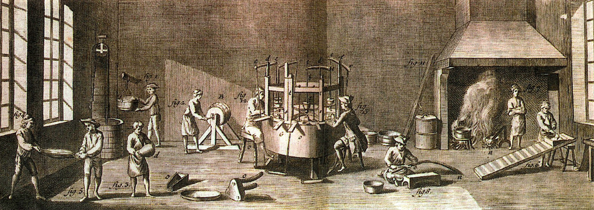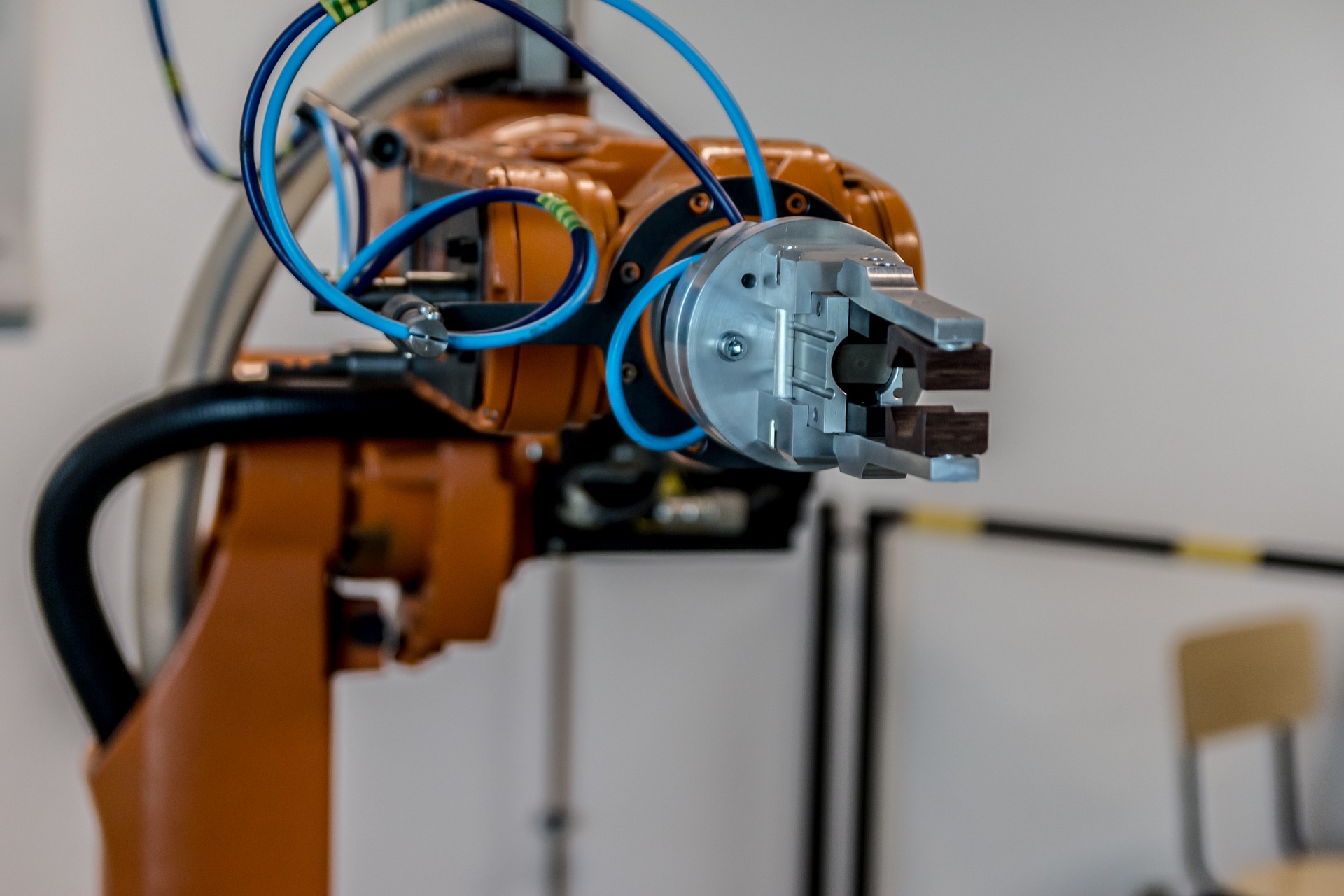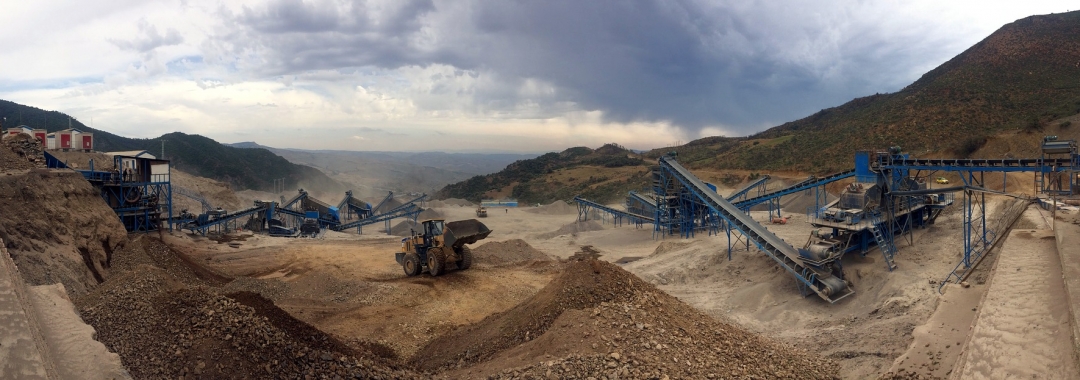Governments and Regions have access to many tools that they can use to influence (i.e., provoke, support or restrict) certain developments in the economy. This section focuses on a few of the key ones. This is a slightly more technical section, aimed more at policy or economic development actors.
Principles, Standards & Guidelines (Some Rules)
This is a very powerful motivator and regulator of markets: dictating what can and can't be sold in a particular market, and in many cases it can dictate much of the products design (material selection, size, weight, volume, power consumption, and pollution levels in its production, use and waste, for example), which is linked to its unit cost, and its distribution cost in foreign markets for example.
Principles, Standards and Guidelines can be used to protect domestic markets (and consumers), as some countries have different standards in different areas of the economy. Finally, how products and the processes within different stages of the supply chain are classified can strongly influence the economics of different business models and forms of value creation. Many institutions helping to develop changes to the environmental impact of industry, work hard in this area; from setting up groups in Brussels to help lobby to ‘change the rules’; or the education and development of tools for eco-design and ISO quality standards for instance.
Economic Industrial Policy
Governments and their economic agencies can influence strategic actions within industry through the coordination of different policies, to deliberately catalyse private-sector growth. These policies can help industry, mainly, in their access to the 'factors-of-production' and in productivity. How this is done, and where the starting line is drawn and projected from, is where varying economic schools of thought differ.
Much of the debate around industrial development tends to revolve around the theory of comparative advantage:
“…if a government does not ‘distort’ trade, a country will specialise in the production and export of those goods for which it is best suited, given its endowments of land, labour and capital. A country has a comparative advantage in an industry if its relative performance in that industry (i.e. its performance as compared with other countries) is better than its relative performance in other industries.” (Chang, 2004)
In an attempt to simplify the debate, on the one side there are those that believe that a country should ‘stick’ to it’s comparative advantage, and those that believe that a country should ‘break some of the rules’, by considering it, but also pushing beyond it. The differences in theoretical viewpoint, have clear repercussions on policy, and in general, those that believe in comparative advantage, often prescribe different forms of A) General Industrial Policy and those that advise countries to go beyond their comparative advantage, often suggest different forms of B) Selective Industry Policy and/or a focus on Competitive Advantage.
It should be stated that the boundaries between ‘General’ and ‘Selective’ Industrial Policy are not always so clear. For example, any choice in a subsidy (i.e. subsidising high-tech industry or the steel industry), or construction of a particular form of infrastructure (i.e an airport or a bridge), or subsidies for different types of educational courses (i.e. electronic or chemical engineering) will inevitably favour some firms or industries over others. The question can be, by how much?; and how much is part of a larger strategy?
Which ever the theoretical viewpoint/starting point, Nobel laureate, Arthur Lewis (1995) underlined that:
“…no country has made economic progress without positive stimulus from intelligent governments.”
Although he also warned of the “mischief done to economic life by governments”. And Justin Yifu Lin, Chief Economist and Senior Vice-President of the World Bank states that:
“[There are] high risk of government failures, but fear of poor governance does not absolve us of responsibility for trying to design effective strategies for facilitating development.” (Lin. (Lin and Chang 2009))
A) General Industrial Policies
These are those general or functional industrial policies concentrating on areas of the economy that can (potentially) benefit all industry equally, but is currently undersupplied by the market.

Subsidising programs. Encouraging first-mover disadvantage (as followers or imitators can learn something from the failures or successes of the first-mover, who did not have to bear the innovation costs). The important work of government here, is to keep it temporary, and based on clear targets, so not to be supporting businesses that can not (at the right time) ‘stand on their own two feet’, and do not become focused more on subsidy seeking, rather than innovating and creating value.
Indirect subsidising programs. Government can also support some of the critical soft and hard infrastructure agents, such as: higher education institutions developing new training/courses; capital goods companies developing new technologies for manufacture; new legal or normative guidelines; and knowledge transfer networks for sharing knowledge of successes and failures of different actors in the system, for example.
Introduce change and co-ordination programs. In many cases, individual firms cannot internalise all the costs involved in ‘industrial upgrading.’ Some potential costs include, human capital (new knowledge – education, and learning by doing and using), improved infrastructure, capital goods investments, increasingly complex technologies, and the potential need for co-ordination of many different firms to achieve the changes, for example.
“Upgrading the industrial structure requires first upgrading the endowment structure [relative abundance of labour and skills, capital, and natural resources], or else the resulting industrial structure will become a drag on development. Therefore, the government’s role is to make sure that the economy is well launched on this endogenous [has an internal cause or origin] process of upgrading.” (Lin. (Lin and Chang, 2009)).
These particular set of programs are less ‘neutral’ than the others.
EOI (Export-Orientated Industrialisation) is a trade and economic policy that can be said to have superseded ISI (see below), particularly from the 1970s, and increasing in the 1980s. It is a strategy aimed to accelerate industrial development of a nation-state, through the advocation of the exportation of goods, and particularly manufactured goods. Promoted by international financial institutions and mostly focusing on developing countries, the ‘policy toolbox’ can include changes to/or development of new, tariffs, quotas, health and administration regulations, and the subsidisation of overseas sales through lower company tax on export income and export subsidies for example. These are often linked to trade agreements with foreign countries, to make it easier/cheaper for domestic countries to access foreign markets, and in return, making it easier for the same foreign state producers to access the domestic markets (lowering import tariffs for example).
“To put it bluntly, economic development is impossible without good export performance. Economic development requires importation of advanced technologies, in the form of either machines [capital goods] or technology licensing, which need to [be] paid for with foreign currencies.” (Chang, 2009).
The state can also help exporters with international marketing, providing information on export markets, by sharing the risks (i.e. supporting with insurance for payment defaults, and loan guarantees) in trying to attain the potentially higher quality standards in the export markets, and indirectly, through financial and legal support for transversal services and inputs, such as R&D, export marketing, processing facilities, and transport facilities for example (Chang, 2009).
Upgrading refers to a strategy to move up the value chain or supply chain of a particular commodity, or set of commodities, into activities that generate higher added value, and as a form of possible ‘co-evolution’ of the entire value chain to produce better or more efficient products.
This has become, increasingly, a dominant strategy in developing and developed countries, as value chains have increasingly ‘vertically splintered’, particularly upstream; and a form of hierarchy has developed within many value chains (some more extreme than others) where the firms higher in the upstream value chain, often earn a greater percentage of the value added than those lower-down. In global markets, this splintering, according to Milberg et al. (2013), often tends to be high value added in developed countries, and low value added in developing countries; lower value added work often has low entry barriers, resulting in the potential for intense competition, very low profit margins, and intensive downward pressure on wages and labour conditions. This can become a trap for these firms/countries, as low profit margins, means low access to financial capital to reinvest in the activity to move up the value chain as this strategy aims to do. Arguable the strategy of specialisation in what you know in this case can be to specialise in being/remaining poor…
B) Selective Industrial Policy
“Selective Industrial Policy refers to policies that favour the development of certain industries or sectors over others with a view to enhancing national economic welfare in the long run.” (Chang, 1994: ch3)

In effect, selective-industrial policy is saying that the state can ‘beat the market’; where the state goes against market signals, or corrects “capital market failures”, by supporting certain industries or firms through specific actions.
ISI (Import Substitution Industrialisation) is a form of trade and economic program (once popular in the global South), which encourages the domestic production of foreign imports. Made popular in the 1960s and 1970s the ‘policy toolbox’ of options included the encouraged development of a vertically integrated infant industry (see below), using tariff protection, public investment, currency over-valuation, and government’s part or full ownership of domestic energy sector production and distribution. Although, not a clear government strategy anymore, it is still part of the discourse for some companies searching new product, innovations – particularly those that try to be fast-followers, or are following other competitive advantage strategies for example.
Infant Industry Protection. Is the protection of some new domestic industries from international competition. These industries can be protected by the state placing targeted tariffs on imports of competing foreign products; Chang (2004) recommends that they should be in the range of 5-10%, never exceeding 20%, and for no more than 5 to 8 years (until they are internationally competitive). Tariffs can also have a cascading structure designed to minimise charges on imports of both raw-materials, and non-competitive capital goods, general goods and components, as was the case in Japan during its growth in the 1970s according to Toner, P. et al (2009). Other policies can include restrictions on the export of raw materials used by these industries, directed quotas and certain types of subsidies, licenses, the management of credit and capital allocation, investment and prices, and “Temporary monopolies/patents/protection given to targeted activities in a certain geographical area.” Reinhart (2007).
A short-run cost of infant industry protection, is that the goods being imported from abroad will rise in cost, and leave all consumers of the particular goods with less disposable income. This can be amplified if the protected industry has a small domestic market, which does not have the benefits of scale to lower unit cost prices, therefore the goods become more expensive from both the local and the foreign producers. In this case the state should promote exports from the protected industries, which also has the benefits of exposing the firms to higher international quality standards, and helps the country with foreign currency earnings, enabling the purchase of new capital good technologies. To aid with scale, the state can also help co-ordinate merges and acquisitions. Chang (2004) underlines that “[t]he exact form of protection pursued should depend on country size and existing industrial capacities.” (Change, 2004) – therefore taking into account its ‘comparative advantage’…
The government can also provide support in terms of infrastructure, education, incentives for productivity investments by the firms, and compensation plans for those industries, individuals or social groups that may loose-out in the short-term. And, linked to potential losers, selective industry protection can also be used to reduce specific industrial activities, such as in Japan, where:
“Low tariffs were also set on industries deemed to have limited prospects for future development or, from the 1970s, on heavily polluting and energy-intensive industries which government sought to move offshore.” (Toner, P. et al. 2009)
Export subsidies are no longer allowed by the WTO (World Trade Organisation) except for the poorest countries, but other forms of support can be made, such as tariff rebates on the inputs consumed in the production of goods for export for example. Indirect subsidies can include the creation of industrial parks (see below for more details), export-processing zones (EPZ) (again, see below for more details) to encourage specific Trans-national-Companies into the area, and regional development subsidies for example.
And finally, another strategy, this time from Korea was “[i]n addition, the government worked hard to make sure that Korean manufacturers could access intermediate inputs at world prices, for example through duty-drawback and exemption schemes and export-processing zones.” (Chang. Lin and Chang 2009)
Big Push Theory. This is similar to ‘Introduce changes and help co-ordinate programs’ (see above), except, instead of being general, policies are selective – targeted to maximise backward and forward linkages along the supply and value chains. Beyond those previously mentioned, the state can also implement complementary indicative investment planning, where the government clearly communicates where it is willing to invest, this then can also encourage private investors to enter directly, and indirectly into complimentary areas, and then firms have the choice to transition their activities towards the government goal, and benefit from these credit and/or subsidy opportunities. The government, with its unique view across the entire state, can also help “[identify] the interdependence of investment decisions and sequencing the investments… the state can ensure that risk is reduced as a barrier to investment and that increasing returns are exploited.” (Toner, P. et al. 2009). The state can also help coordinate and regulate industrial investment, and provide R&D and training support, both specifically and in general.
Chang (2004) states that selective policies need to have clear accountability, performance review, and oversight, which can be linked to rewards and penalties, to increase chances of success. Evidently, selective policies demand a capable and effective government, and here Chang (2009) counter’s well the common dismissal of the government’s role in industrial development:
“…we do not need the assumption that government officials are omniscient or even that they are cleverer than capitalists in order to advocate industrial policy. The point is that many (although not all) of the “superior” decisions made by the state were made not because the government officials were omniscient or cleverer than businessmen but because they could look at things from a national and long-term point of view, rather than a sectional, short-term point of view.”
However, Chang (2009) also highlights that governments may not want to state too transparently a selective strategy (even if it has one), as it will highlight those who will benefit, and therefore potentially, those who will not; breaking down a position that a government might want to maintain – one of impartiality.
Parks and Zones
This includes two, sometimes linked, industrial development strategies.

Industrial Parks (IE). Also known as industrial estates or trading estates, are zones that have been planned for the development of industry. The parks can reduce hard infrastructure costs, borne by the individual businesses, such as internet and high-power electricity supply for example. Site 'symbiosis' can be possible, in the case that some business are customers for other businesses in the park - reducing logistics costs for example. And industrial parks can be easier to manage environmental controls of one large site, rather than many individual industries spread across a large area.
Special Economic zones (SEZ). Also includes (FTZ), EPZ (Export Processing Zones), FZ/FEZ or BLP for example. Within these designated zones, typical incentives (Milberg, 2013) can include exemption or reduction in some of the following: import duties on raw materials and/or intermediate goods, export taxes, local and property taxes, VAT on domestic purchases, provision of streamlined administrative services - particularly for imports and exports, and enhanced hard infrastructure for example. Soft infrastructure benefits can include (controversially) reduced labour rights and standards, and different regulations for leasing or purchasing land for example. SEZs can apply to a single factory, a “fenced-in” geographic area, or an entire province.
SEZs are generally created to attract foreign firms in the case that certain local industries are not able to export (to be internationally competitive), and so to generate foreign exchange. For some governments intent to promote exports and create jobs, and foreign firms such as TNCs (Trans-National Companies) looking for financially viable production conditions, SEZs have seemed to reconcile these two objectives. For SEZ’s to contribute to sustained domestic economic development, they need linkages with the rest of the economy - which by their very nature is not a given, and so focus must be given.
Action groups
Within the soft infrastructure, and directly acting and influencing the way in which the value chain forms and develops are ‘Action Groups.’ This includes groups, or a network of groups and individuals, involved and tasked in the activity of change on some part of the system as a whole. It is important to highlight this group specifically from the other institutions and groups (although inter-dependent), as this group is often made up of a mix of different types of stake-holders from different parts of the ecosystem. The responsible(s) of these groups are often tasked with the facilitation of the actors themselves: structuring the meetings, sharing knowledge, being a broker-of-trust, developing the network of stakeholders involved; facilitating the development of research and strategy; and implementing directly or indirectly, in the system - either as policy proposal, or as a real project within a company for example.
Michael Porter popularised different sources of 'competitive advantage,’ and one of those being 'industrial clusters' (see the 'soft infrastructure' tab). Clusters are an important form of action group. Clusters are "an alternative way of organizing the value chain... A cluster of independent and informally linked companies and institutions represents a robust organisational form that offers advantages in efficiency, effectiveness, and flexibility.” (Porter, 1998). Porter (1998) also uses an example based on a wood product cluster, which showed that "[s]ubstantial improvement in productivity was possible, but only if several parts of the cluster changed simultaneously." Highlighting that clusters can also be useful tools in facilitating changes across an entire value chain level.









